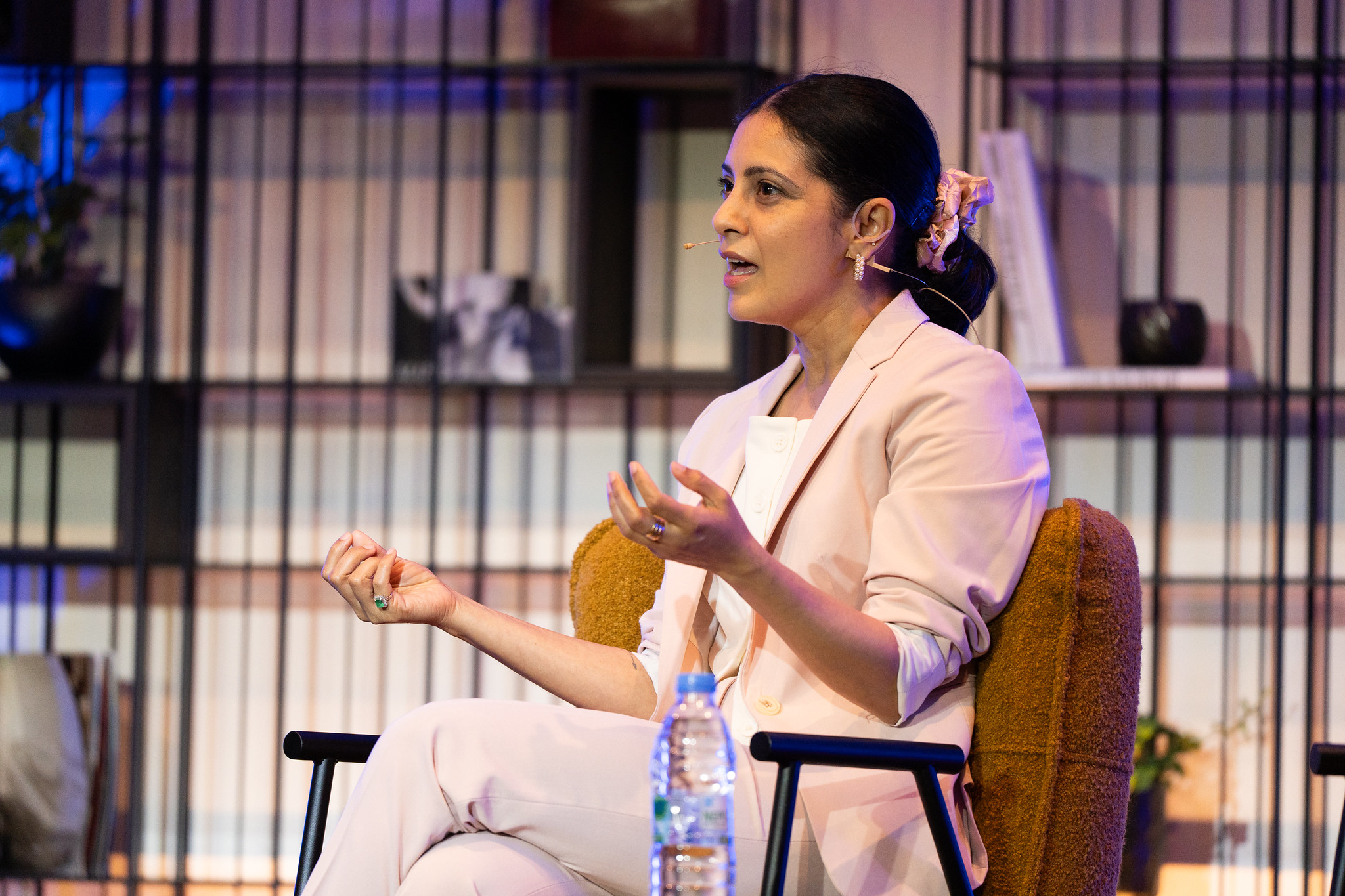Why are younger generations turning away from the news? What happens when trust in traditional media fades? According to the Director of the Reuters Institute at Oxford University, Mitali Mukherjee, this disconnect and the changing audience expectations are reshaping the global media landscape.
“News” in 2025 is in the eye of the beholder

News is now personal: people define it based on identity, interest, and choice—not traditional gatekeepers, says Pew study.
“The news misses its audiences, but the audience doesn’t miss the news. That relationship needs to be rebuilt, especially for younger people,” said Mitali Mukherjee, Director of the Reuters Institute for the Study of Journalism at Oxford University, during our fireside chat at the Alternative stage of this year’s TEDx Patras.
The discussion took place at the campus of the University of Patras in Greece in a room full of students and young people: the very audience that news outlets are eager to win back.
According to the latest Digital News Report, the Reuters Institute’s flagship annual survey that tracks how people engage online with the news, trust is drifting towards “news influencers” as many young people no longer see themselves reflected in the stories the media chooses to tell, AI is reshaping news production, and news avoidance is rising.
The latest edition, published on June 17, 2024, surveyed online news consumption across six continents and 47 countries. This year’s edition – the 14th annual report since its initial release in 2012 – will be published on June 17.
“I think the arc of how [the Report] moved is kind of instructive to understand what is happening with news audiences,” Mukherjee said on stage. Back in 2012, the central question was a simple one: ‘Are people even getting their news online?’, she added. Almost a decade and a half later, the question isn’t if they’re consuming digital news, but how, where, and increasingly, why less.
News avoidance
During our discussion, Mukherjee noted that in recent years, news avoidance – driven by low engagement, limited media literacy, or deliberate choice – has become a central theme in the Report.
“While every country has its own unique news ecosystem, the clearest trend we have seen, particularly post-pandemic, is a growing number of ‘news avoiders’. [In 2024], across markets, 40% of those surveyed say they sometimes or often avoid the news. These figures are significantly higher for markets like Greece, Bulgaria, and Turkey,” she explained.
The Report also highlighted a clear shift away from traditional news websites, noting that often, users encounter news not by actively searching for it, but rather by stumbling upon it as they scroll through their feeds.
There is an additional problem, added Mukherjee. “Many people no longer find value in the news, and some are put off by how they are portrayed.”

AI: friend or foe?
She emphasized that it is striking how, in the 2023 Digital News Report, AI was seen as a promising but vague opportunity for news publishers.
“By 2024, that uncertainty had turned into action. Nearly every newsroom surveyed was experimenting with AI,” she said. The audience is already using AI to engage with the news in their terms (…) They are more interested in what news organizations can do in terms of being creative with the news-telling process”.
Readers want the option to be offered clear summaries, the option to dive deeper or skim an article, and the ability to revisit earlier parts of a story. These, she said, are the features audiences are eager to explore.
Indeed, news organizations are experimenting in innovative ways. Mukherjee shared an example from the New York Times.
Shortly after President Trump took office in January 2025, a series of executive orders led to the systematic removal of certain language from federal documents. The New York Times used AI-driven tools to identify terms that have been stripped from public content. Frequently targeted phrases included references to “diversity, equity, and inclusion,” “gender,” and “free press.”
News influencers
“Ultimately, what is most important is what Big Tech does with AI, because that’s the one that is conveying real-time news to audiences,” Mukherjee said.
According to the Report, there is an ongoing “platform reset,” a deliberate recalibration of algorithms that increasingly push traditional news content to the margins. This shift has opened the door for a new breed of media players, she noted.
Influencers and creators range from partisan political commentators (like Tucker Carlson and Joe Rogan) to entertainers and youth-focused news presenters (such as Hugo Décrypte in France), who challenge the mainstream media.
“Young people find this unvarnished, unfiltered quality very appealing. They certainly build a personal connection with those that they’re listening to,” she said.
Mukherjee noted that during the U.S. presidential election, both candidates turned to podcasters for interviews, highlighting Kamala Harris’s appearance on the podcast “Call Her Daddy” as a notable example.
What does the audience ultimately want?
During our TEDxPatras discussion, Mukherjee referred to the work of Dmitry Shishkin, formerly of the BBC, who developed what’s known as the User Needs Model. The model identifies three key needs that emerge across age groups: keeping audiences informed on major stories, offering deeper insight, and providing context to explain the news.
“For younger people, there are a few other parameters, such as wanting to see more hopeful news, wanting to see more entertaining news. And I think if we start thinking about these models of what audiences are looking for immediately, it would be a first step toward creating content that resonates,” she said.
In that spirit, Mukherjee shared examples of innovative newsrooms around the world, which found new ways to engage audiences.
In Paraguay, El Surtidor connects deeply with its community through local stories. Across the Atlantic, American startup Roca News is reinventing news consumption with ‘Duolingo-style’ quizzes that reward users for answering questions and advancing on key issues. In Romania, Gen știri experiments with visual storytelling, using text images and vertical videos, and adds explainer content to make complex topics clearer.
The case of Greece
Greece ranked last among 47 countries in terms of trust in news at the latest Reuters Institute survey, largely due to a polarized media environment, political influence, and media concentration.
Mukherjee pointed out how this makes the work of journalists even more difficult.
“In markets like Greece and India, where I come from, it’s not easy being a journalist,” she said.
“It comes with a lot of costs. It comes with legal risks. It comes with threats to your life. It comes with a lot of mental stress. And people go out and do that job because they do it for the public good, because a robust democracy needs a thriving journalist community, and it needs a habit within its audiences of engaging with the news, questioning things, and asking questions. It’s like a three-way model, you know, in order for any country to survive and thrive. So, journalists have a lot of work to do. Audiences have to give them that opportunity. And I think there is no better time than now.”

